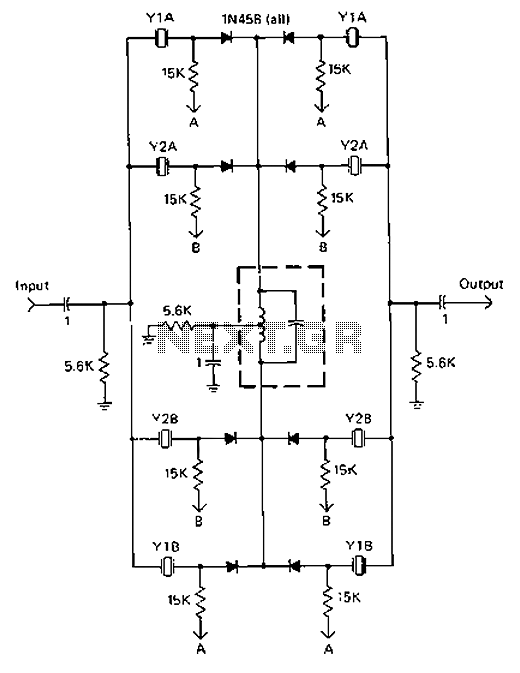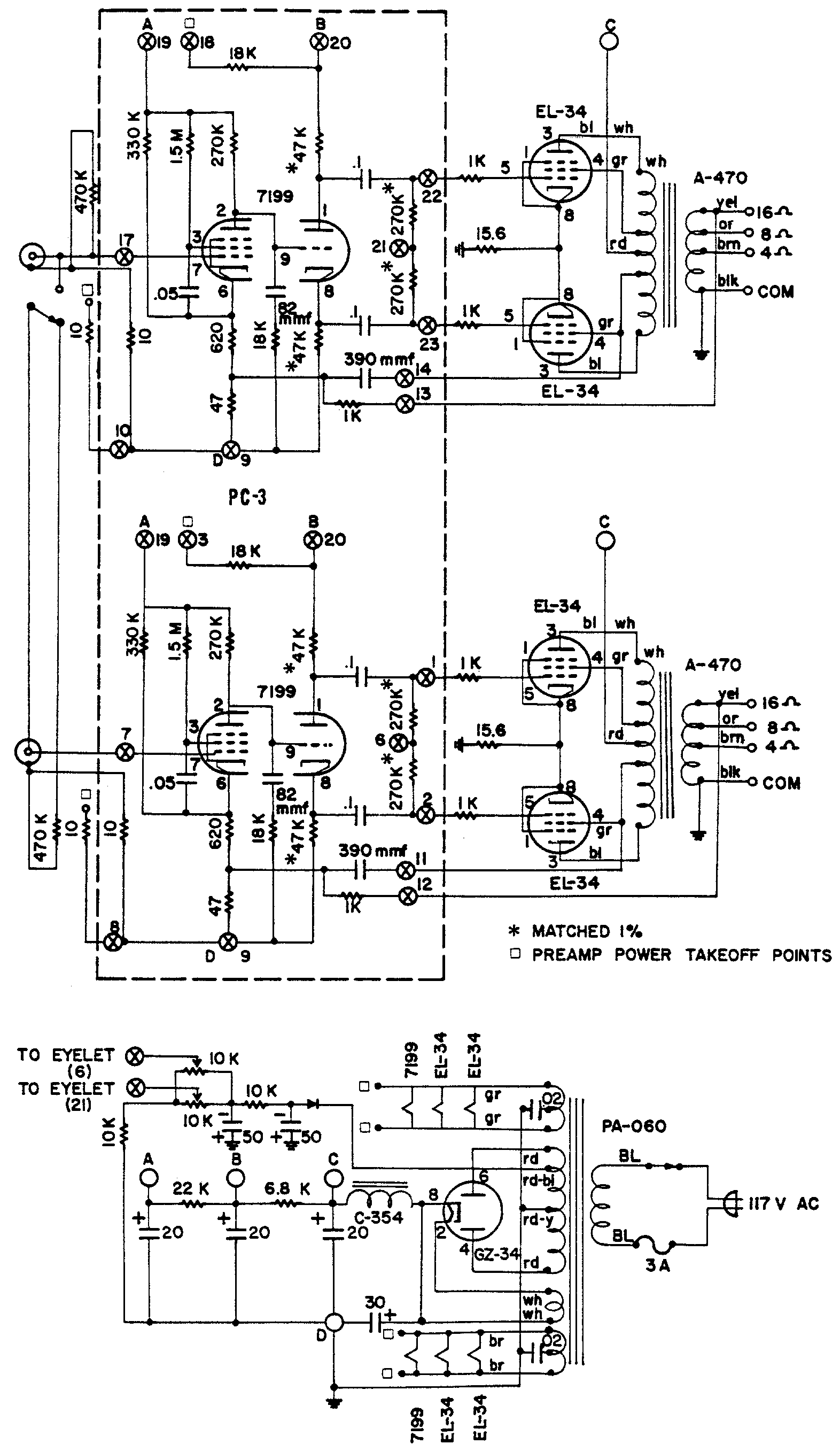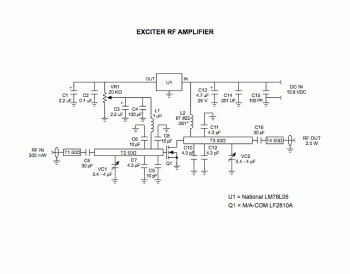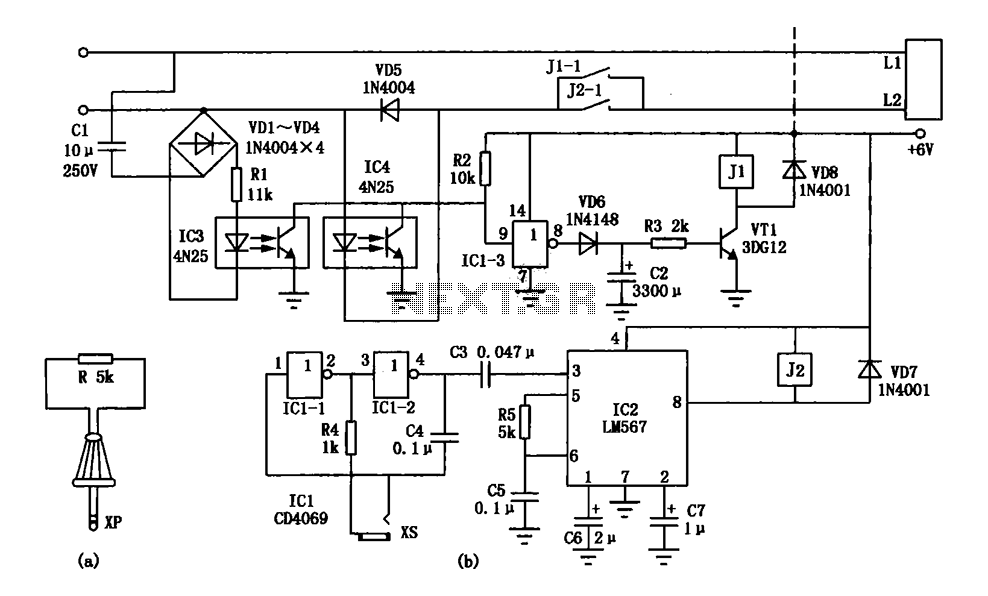
HF linear amplifier circuit
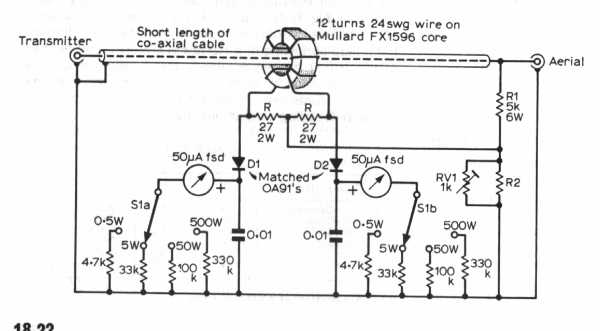
The power amplifier (PA) output Pi section features two variable capacitors: one ranging from 20 to 120 pF and a second, custom-built capacitor with a range of 50 to 450 pF. The latter is activated for lower frequency bands using a modified 12V power relay. An anode choke, consisting of 200 turns of 24 AWG wire wound on a 1-inch diameter PTFE tube and measuring 5 inches in length, is directly mounted onto a 3300 pF, 10 kV doorknob capacitor via a small turned brass ferrule. The grid compartment is designed with a main fan that blows air into the sealed area, allowing airflow to exit through holes around the grid bases and into the PA chimneys. The heater and cathode connections are constructed from thin brass strips. The heater choke is wound on a ferrite rod sourced from a scrap transistor radio, using a bifilar winding technique with 28 turns of 10 AWG wire. The input circuit incorporates a 100-ohm non-inductive resistor rated at 50 watts, which is placed directly across the input. Under normal operating conditions, the grid load is also approximately 100 ohms, contributing to a favorable input voltage standing wave ratio (VSWR).
The power amplifier output Pi section is a critical component in high-frequency RF applications, where precise tuning and efficient power transfer are essential. The use of variable capacitors allows for fine-tuning of the circuit to achieve optimal performance across different frequency bands. The custom capacitor's design, activated by a relay, enhances versatility, enabling the amplifier to operate effectively in lower frequency ranges.
The anode choke serves to stabilize the high-voltage output, ensuring that the circuit maintains a consistent performance under varying load conditions. The choice of materials, such as the PTFE tube for the choke, is important for maintaining insulation and minimizing losses. The connection between the choke and the doorknob capacitor through a brass ferrule ensures a robust mechanical and electrical link, which is essential for high-power applications.
Airflow management within the grid compartment is crucial for thermal regulation, as excessive heat can lead to component failure. The design allows for effective cooling, with the fan facilitating airflow that aids in dissipating heat generated during operation. The strategic placement of holes around the grid bases ensures that air is efficiently channeled through the PA chimneys, promoting optimal thermal performance.
The heater and cathode connections, made from brass strips, are chosen for their low resistance and good conductivity, essential for maintaining the reliability of the heating circuit. The bifilar winding of the heater choke on a ferrite rod enhances inductance while minimizing electromagnetic interference, which is particularly important in RF circuits.
The inclusion of a non-inductive resistor in the input circuit is a standard practice to prevent reflections and ensure a smooth impedance match. The 100-ohm value aligns with the grid load, optimizing the input VSWR and enhancing the overall efficiency of the amplifier. This careful consideration of component selection and circuit design contributes to a robust, high-performance power amplifier suitable for demanding RF applications.The PA output Pi section consists of 2 variable Cs (20 - 120pF and a second (home made) 50 - 450pF switched in for the lower bands by a simply modified 12v power relay). The anode choke (200t, 24swg 5" long on 1" dia PTFE tube stock) is mounted directly onto a 3300pF 10kV doorknob capacitor using a small turned brass ferule.
The grid compartment. The main fan blows into the sealed grid compartment, and exits through holes around the grid bases to flow through the PA chimneys. The heater/cathode connections are again made from thin brass strip. The heater choke is wound on ferrite rod (from a scrap transistor radio, bifilar 28t 10swg). The input circuit consists of a 100ohm non-inductive 50Watt resistor (Farnell - about £3) directly across the input.
The grid load is also about 100ohm under normal operating conditions so the input VSWR should be quite good. 🔗 External reference
The power amplifier output Pi section is a critical component in high-frequency RF applications, where precise tuning and efficient power transfer are essential. The use of variable capacitors allows for fine-tuning of the circuit to achieve optimal performance across different frequency bands. The custom capacitor's design, activated by a relay, enhances versatility, enabling the amplifier to operate effectively in lower frequency ranges.
The anode choke serves to stabilize the high-voltage output, ensuring that the circuit maintains a consistent performance under varying load conditions. The choice of materials, such as the PTFE tube for the choke, is important for maintaining insulation and minimizing losses. The connection between the choke and the doorknob capacitor through a brass ferrule ensures a robust mechanical and electrical link, which is essential for high-power applications.
Airflow management within the grid compartment is crucial for thermal regulation, as excessive heat can lead to component failure. The design allows for effective cooling, with the fan facilitating airflow that aids in dissipating heat generated during operation. The strategic placement of holes around the grid bases ensures that air is efficiently channeled through the PA chimneys, promoting optimal thermal performance.
The heater and cathode connections, made from brass strips, are chosen for their low resistance and good conductivity, essential for maintaining the reliability of the heating circuit. The bifilar winding of the heater choke on a ferrite rod enhances inductance while minimizing electromagnetic interference, which is particularly important in RF circuits.
The inclusion of a non-inductive resistor in the input circuit is a standard practice to prevent reflections and ensure a smooth impedance match. The 100-ohm value aligns with the grid load, optimizing the input VSWR and enhancing the overall efficiency of the amplifier. This careful consideration of component selection and circuit design contributes to a robust, high-performance power amplifier suitable for demanding RF applications.The PA output Pi section consists of 2 variable Cs (20 - 120pF and a second (home made) 50 - 450pF switched in for the lower bands by a simply modified 12v power relay). The anode choke (200t, 24swg 5" long on 1" dia PTFE tube stock) is mounted directly onto a 3300pF 10kV doorknob capacitor using a small turned brass ferule.
The grid compartment. The main fan blows into the sealed grid compartment, and exits through holes around the grid bases to flow through the PA chimneys. The heater/cathode connections are again made from thin brass strip. The heater choke is wound on ferrite rod (from a scrap transistor radio, bifilar 28t 10swg). The input circuit consists of a 100ohm non-inductive 50Watt resistor (Farnell - about £3) directly across the input.
The grid load is also about 100ohm under normal operating conditions so the input VSWR should be quite good. 🔗 External reference
